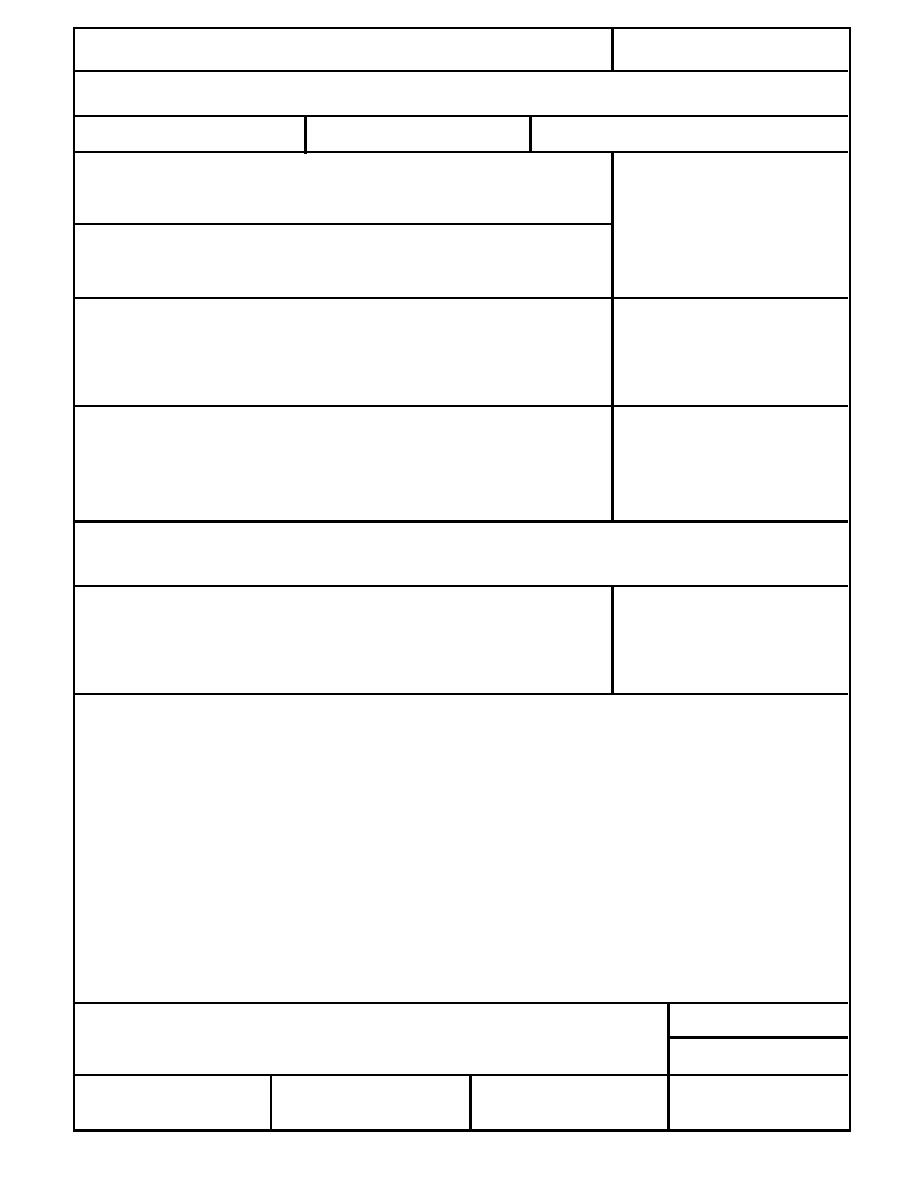
Form Approved
REPORT DOCUMENTATION PAGE
OMB No. 0704-0188
Public reporting burden for this collection of information is estimated to average 1 hour per response, including the time for reviewing instructions, searching existing data sources, gathering and
maintaining the data needed, and completing and reviewing the collection of information. Send comments regarding this burden estimate or any other aspect of this collection of information,
including suggestion for reducing this burden, to Washington Headquarters Services, Directorate for Information Operations and Reports, 1215 Jefferson Davis Highway, Suite 1204, Arlington,
VA 22202-4302, and to the Office of Management and Budget, Paperwork Reduction Project (0704-0188), Washington, DC 20503.
1. AGENCY USE ONLY (Leave blank)
2. REPORT DATE
3. REPORT TYPE AND DATES COVERED
August 1998
4. TITLE AND SUBTITLE
5. FUNDING NUMBERS
Investigations of Plastic Composite Materials for Highway Safety Structures
DTFH61-90-Y-00035
6. AUTHORS
Piyush K. Dutta
7. PERFORMING ORGANIZATION NAME(S) AND ADDRESS(ES)
8. PERFORMING ORGANIZATION
REPORT NUMBER
U.S. Army Cold Regions Research and Engineering Laboratory
72 Lyme Road
CRREL Report 98-7
Hanover, New Hampshire 03755-1290
9. SPONSORING/MONITORING AGENCY NAME(S) AND ADDRESS(ES)
10. SPONSORING/MONITORING
AGENCY REPORT NUMBER
Federal Highway Administration
6300 Georgetown Pike
McLean, Virginia 22101
FHWA-RD-98-060
11. SUPPLEMENTARY NOTES
For conversion of SI units to non-SI units of measurement, consult ASTM Standard E380-93, Standard Practice for Use of the
International System of Units, published by the American Society for Testing and Materials, 100 Barr Harbor Drive., West
Conshohocken, Pennsylvania 19428-2959.
12a. DISTRIBUTION/AVAILABILITY STATEMENT
12b. DISTRIBUTION CODE
Approved for public release; distribution is unlimited.
Available from NTIS, Springfield, Virginia 22161
13. ABSTRACT (Maximum 200 words)
This report presents a basic overview and assessment of different concepts and technologies of using polymer
composites in structures generally used for highway safety. The structural systems included a highway barrier
guardrail with its posts and blockouts, sign posts, concrete reinforcing rebars, breakaway couplers, and crushable
plastic cushions to protect errant drivers from roadside sign and utility posts, and small trees. The composites
included fiber reinforced plastics (FRP) in laminated and bar forms, and commercially available recycled and
reconstituted structural plastic composites. Commercially available FRP composites, recycled plastic composites,
and several conceptual designs and prototype components were assessed and tested. The results showed many
potential advantages of using composites in almost all the structures considered, but one-to-one replacement of
conventional materials was not always found attractive. For deriving maximum benefits from fiber composites,
the basic performance of the given structures should be reassessed and then composites should be designed at
the materials level using innovative fiber architecture and appropriate manufacturing technologies that can meet
those performance requirements.
14. SUBJECT TERMS
15. NUMBER OF PAGES
85
Breakaway supports, Composites, Crush cushions, Guardrails, FRP, Highway barriers,
16. PRICE CODE
Highway safety structures, New materials, Rebars, Recycled plastics, Roadside safety
17. SECURITY CLASSIFICATION
18. SECURITY CLASSIFICATION
19. SECURITY CLASSIFICATION
20. LIMITATION OF ABSTRACT
OF REPORT
OF THIS PAGE
OF ABSTRACT
UNCLASSIFIED
UNCLASSIFIED
UNCLASSIFIED
UL
Standard Form 298 (Rev. 2-89)
NSN 7540-01-280-5500
Prescribed by ANSI Std. Z39-18
298-102



 Previous Page
Previous Page
